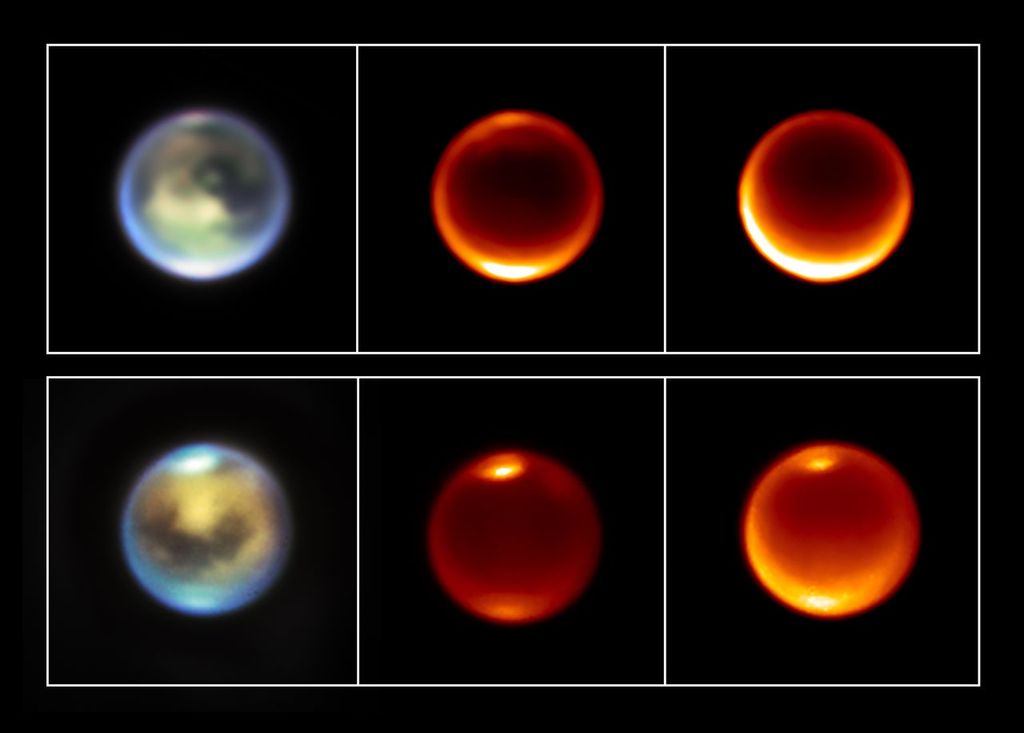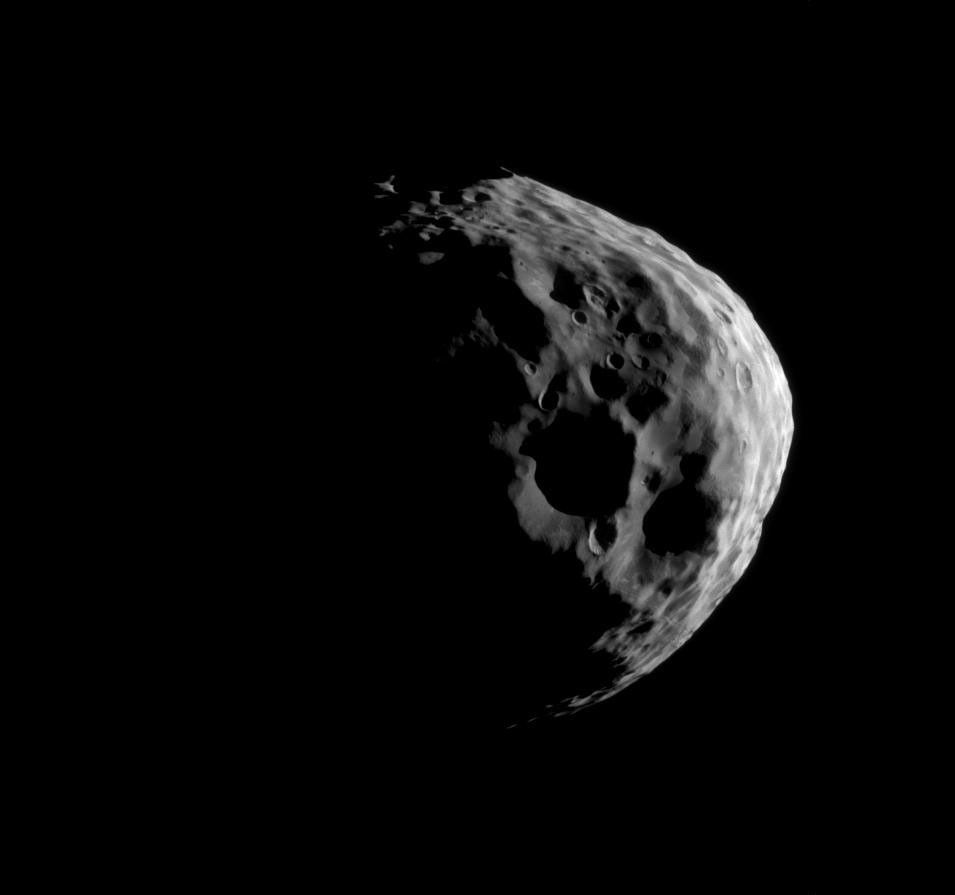Janus
Contents
Discovery
Audouin Dollfus observed a moon on Dec. 15, 1966, for which he proposed the name "Janus." On 18 December of the same year, Richard Walker made a similar observation, now credited as the discovery of Epimetheus. At the time, astronomers believed that there was only one moon, unofficially known as "Janus," in the given orbit. Twelve years later, in October 1978, Stephen M. Larson and John W. Fountain realized that the 1966 observations were best explained by two distinct objects (Janus and Epimetheus) sharing very similar orbits. Voyager I confirmed this in 1980.
The Cassini spacecraft has made several close approaches and provided detailed images of Janus since Cassini achieved orbit around Saturn in 2004.
Overview
Janus is a potato-shaped moon with a mean radius of 55.6 miles (89.5 kilometers) and dimensions of 122 x 119 x 93 miles (196 x 192 x 150 kilometers, respectively).
Janus is extensively cratered with several craters larger than 19 miles (30 kilometers). Janus' prominent craters are named Castor, Phoebe, Idas and Lynceus.
This oblong moon orbits 94,000 miles (151,000 kilometers) away from Saturn, taking 17 hours to complete one orbit, in the gap between the F and G rings, but it doesn't do this alone. It actually shares its orbit with a sister moon named Epimetheus, in what is called a co-orbital condition or 1:1 resonance.
One moon orbits 31 miles (50 km) farther away from the planet than the other, taking more time to complete one turn around Saturn. This slight difference means the inner, faster moving moon starts to catch up to the other approximately every four Earth years. Interestingly, when this happens, the gravity interaction between the moons causes them to trade places between these inner and outer orbits. The closest they get is about 6,200 miles (15,000 km). This is the only such orbital configuration known in the solar system.
Janus and Epimetheus may have formed by the break-up of one moon. If so, it would have happened early in the life of the Saturn system since both moons have ancient cratered surfaces, many with soft edges because of dust. They also have some grooves (similar to grooves on the Martian moon Phobos) suggesting some glancing blows from other bodies. Together, the moons trail enough particles to generate a faint ring. However, except for very powerful telescopes, the region of their common orbit appears as a gap between Saturn's prominent F and G rings.
Janus and Epimetheus are the fifth and sixth moons in distance from Saturn. Both are phase locked with their parent; one side always faces toward Saturn. Being so close, they orbit in less than 17 hours. They are both thought to be composed of largely of water ice, but their density of less than 0.7 is much less than that of water. Thus, they are probably "rubble piles" -- each a collection of numerous pieces held together loosely by gravity. Each moon has dark, smoother areas, along with brighter areas of terrain. One interpretation of this is that the darker material evidently moves down slopes, leaving shinier material such as water ice on the walls of fractures. Their temperature is approximately -195 degrees Celsius (-319 degrees Fahrenheit). Their reflectivity (or albedo) of 0.7 to 0.8 in the visual range again suggests a composition largely of water ice.
Janus and Epimetheus share their orbits with a faint dust ring around Saturn, now called the Janus/Epimetheus Ring. This ring may be made of particles blasted off their surfaces by meteoroid impacts.
How Janus Got its Name
The name Janus comes from the Roman god of gates, doors, doorways, beginnings, and endings. He is usually represented as having one face to look forward and another to look back. The Romans may have partially adopted Janus from an Etruscan god, from the Greek god Hermes, or from both. His most apparent remnants in modern English are the month of January and the caretaker of doors and halls, the janitor.
Astronomers also refer to Janus as Saturn X and as S/1980 S1.





























